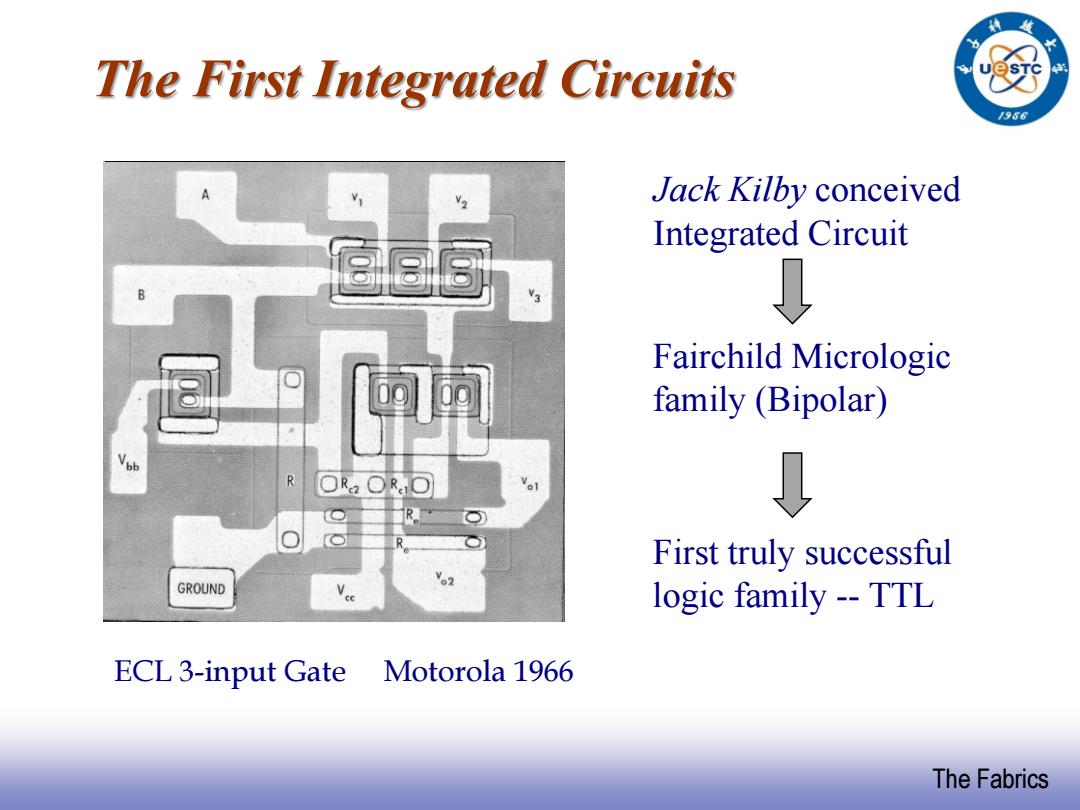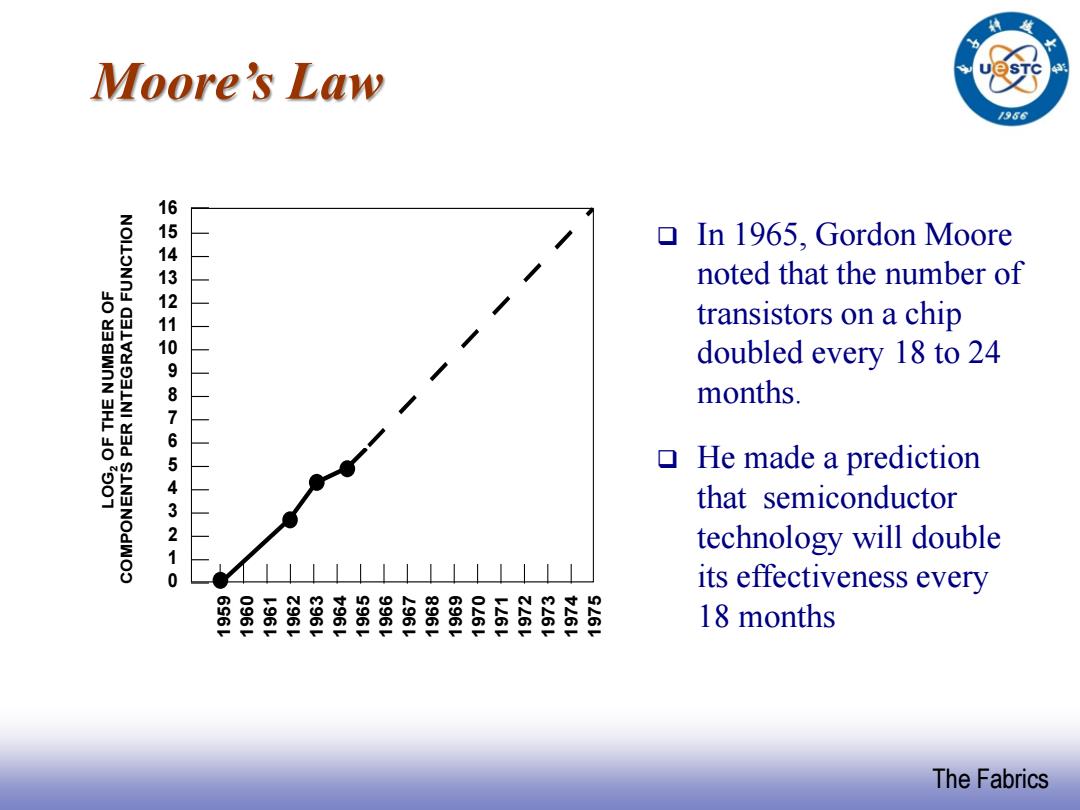
1966 Advanced Digital Integrated Circuits Design Lecture 1:Introduction The Fabrics The Fabrics
EE141 The Fabrics Advanced Digital Integrated Circuits Design Lecture 1: Introduction & The Fabrics

Agenda 1966 ▣l.1 Introduction 1.2 Overview on Manufacturing Process 1.3 The MOS(FET)Transistor 1.3.1 I-V/C-V characteristics (self-learning) ▣1.3.2 SPICE Models 1.4 Process variations The Fabrics
EE141 The Fabrics Agenda ❑ 1.1 Introduction ❑ 1.2 Overview on Manufacturing Process ❑ 1.3 The MOS(FET) Transistor ❑ 1.3.1 I-V/C-V characteristics (self-learning) ❑ 1.3.2 SPICE Models ❑ 1.4 Process Variations

Agenda 1966 ▣l.1 Introduction 1.2 Overview on Manufacturing Process 1.3 The MOS(FET)Transistor 1.3.1 I-V/C-V characteristics (self-learning ▣1.3.2 SPICE Models 1.4 Process variations The Fabrics
EE141 The Fabrics Agenda ❑ 1.1 Introduction ❑ 1.2 Overview on Manufacturing Process ❑ 1.3 The MOS(FET) Transistor ❑ 1.3.1 I-V/C-V characteristics (self-learning) ❑ 1.3.2 SPICE Models ❑ 1.4 Process Variations

The First Automatic Calculator 1966 Working parts of Babbage's Difference Engine I (1832)with 25,000 mechanical parts and a cost of £17,470,courtesy of the Science Museum of London The Fabrics
EE141 The Fabrics Working parts of Babbage’s Difference Engine I (1832) with 25,000 mechanical parts and a cost of £17,470, courtesy of the Science Museum of London The First Automatic Calculator

Evolution of Digital Electronic Computing 1966 Electrical solution Magnetically controlled switches Vacuum tube Digital electronic 4022 computing ENIAC-The First Electronic Computer(1946), with18000 vacuum tubes,30m×2.4m×0.9m The Fabrics
EE141 The Fabrics Evolution of Digital Electronic Computing ENIAC - The First Electronic Computer (1946), with 18000 vacuum tubes, 30m×2.4m×0.9m Electrical solution Vacuum tube Magnetically controlled switches Digital electronic computing

The Transistor Revolution 1966 First point contact transistor, Bell Labs,1947 John Bardeen, William Shockley, and Walter Brattain The Fabrics
EE141 The Fabrics The Transistor Revolution First point contact transistor, Bell Labs, 1947 John Bardeen, William Shockley, and Walter Brattain

The First Integrated Circuits 1966 Jack Kilby conceived Integrated Circuit Fairchild Micrologic family (Bipolar) First truly successful GROUND logic family -TTL ECL 3-input Gate Motorola 1966 The Fabrics
EE141 The Fabrics The First Integrated Circuits ECL 3-input Gate Motorola 1966 Jack Kilby conceived Integrated Circuit First truly successful logic family -- TTL Fairchild Micrologic family (Bipolar)

Intel 4004 Micro-Processor 1966 1971 1000 transistors 1 MHz operation 1st high-density semiconductor memories 4004 The Fabrics
EE141 The Fabrics Intel 4004 Micro-Processor 1971 1000 transistors 1 MHz operation 1 st high-density semiconductor memories

Transition to automation and Regular Structures 1966 Intel4004('71) Intel8080('74) Intel8086('78) 中23523年03 Intel8286('82) Intel8486('89) Intel Pentium 4(00) The Fabrics
EE141 The Fabrics Transition to Automation and Regular Structures Intel 4004 (‘71) Intel 8080 (‘74) Intel 8086 (‘78) Intel 8286 (‘82) Intel 8486(‘89) Intel Pentium 4 (‘00)

Moore's Law /966 口In1965,Gordon Moore 6543210987654321 noted that the number of transistors on a chip doubled every 18 to 24 months. He made a prediction that semiconductor technology will double its effectiveness every 2/9% t96L 895 219m 18 months The Fabrics
EE141 The Fabrics Moore’s Law ❑ In 1965, Gordon Moore noted that the number of transistors on a chip doubled every 18 to 24 months. ❑ He made a prediction that semiconductor technology will double its effectiveness every 18 months 16 15 14 13 12 11 10 9 8 7 6 5 4 3 2 1 0 1959 1960 1961 1962 1963 1964 1965 1966 1967 1968 1969 1970 1971 1972 1973 1974 1975 LOG2 OF THE NUMBER OF COMPONENTS PER INTEGRATED FUNCTION